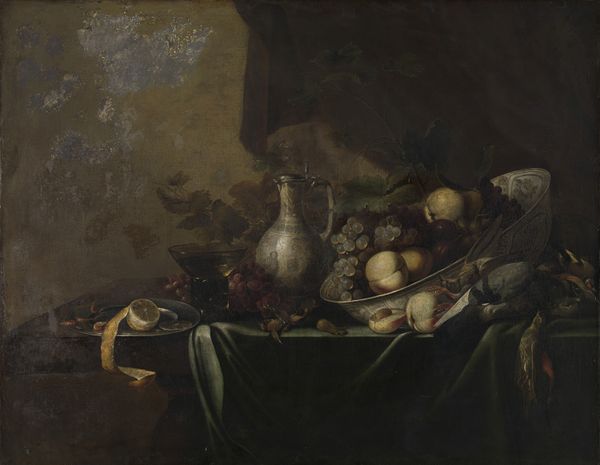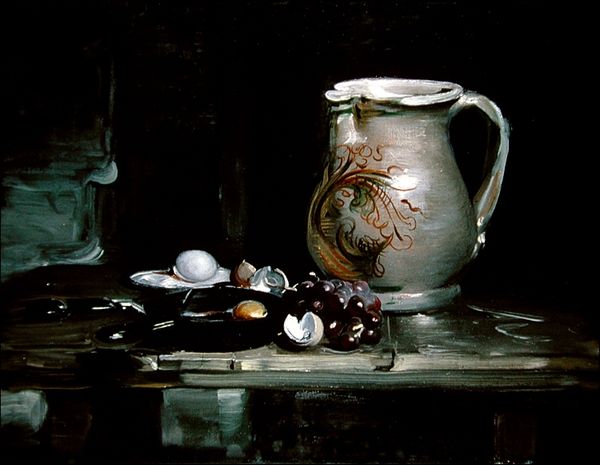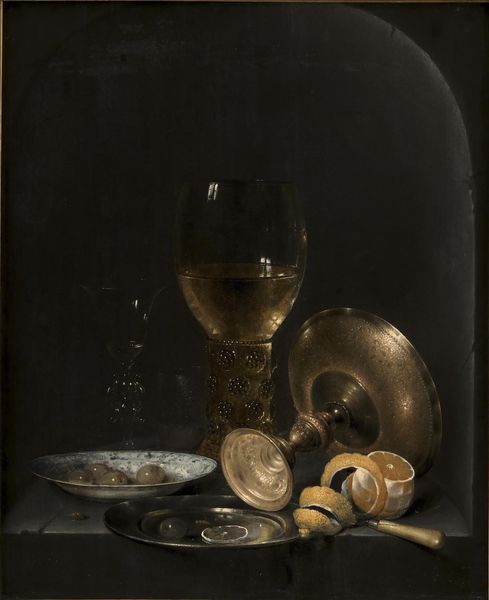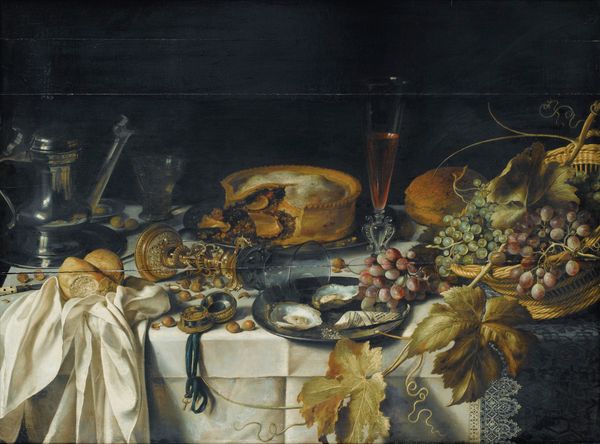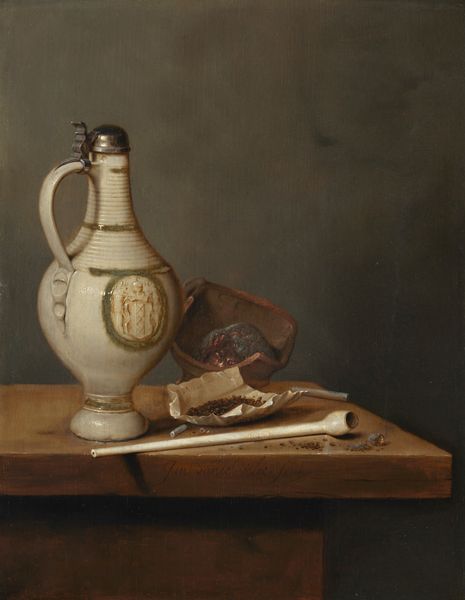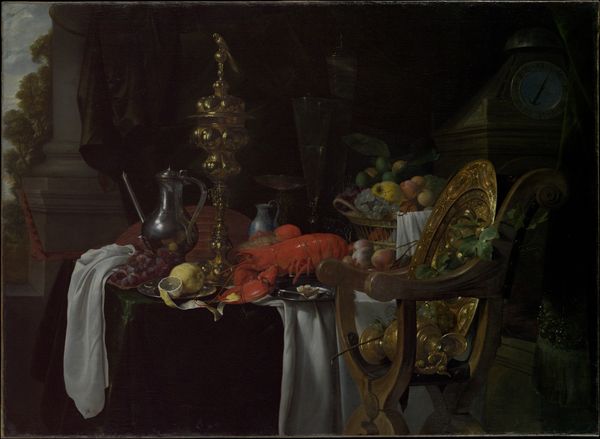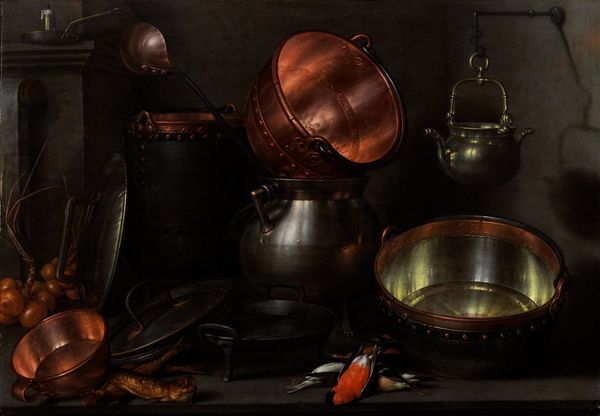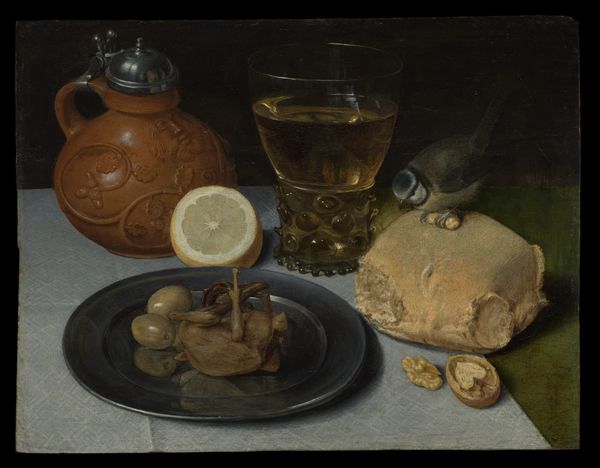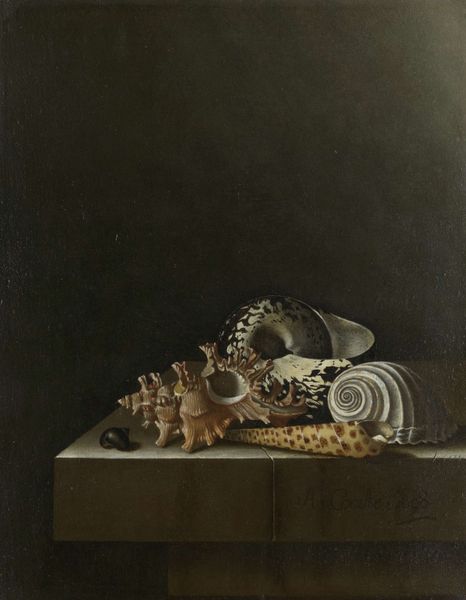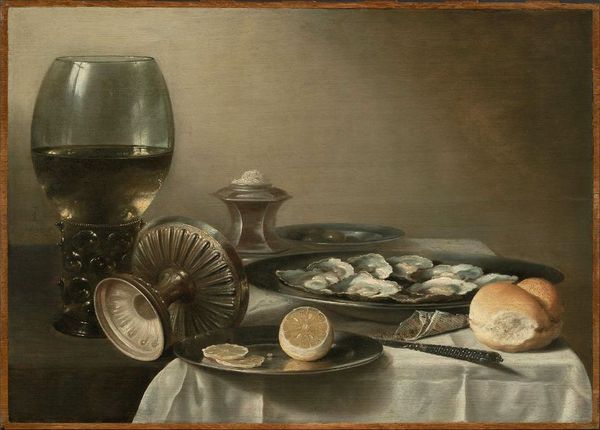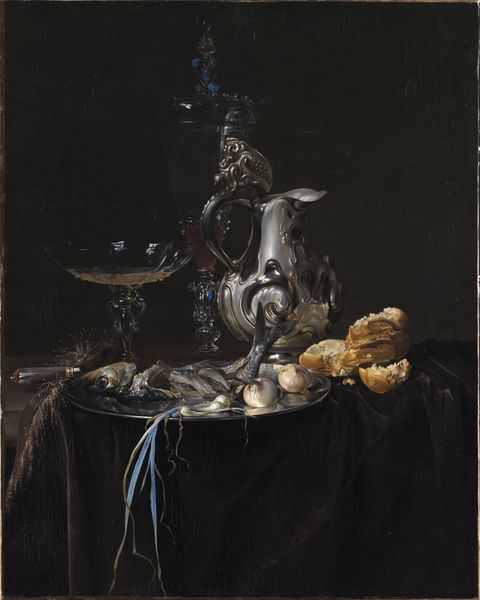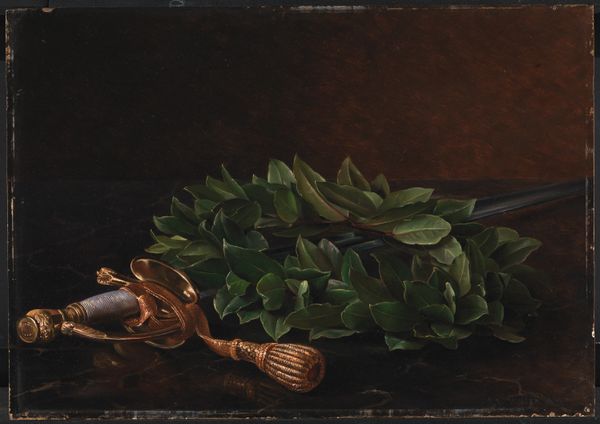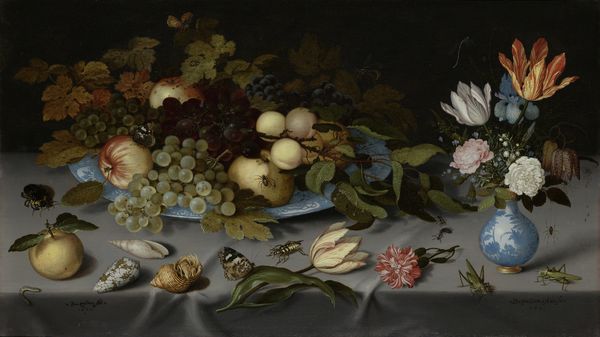
Still Life with Oysters, a Silver Tazza, and Glassware 1635
0:00
0:00
oil-paint, glass
#
dutch-golden-age
#
oil-paint
#
mannerism
#
glass
#
realism
Dimensions: 19 5/8 x 31 3/4 in. (49.8 x 80.6 cm)
Copyright: Public Domain
Curator: This painting, "Still Life with Oysters, a Silver Tazza, and Glassware," was created around 1635 by Willem Claesz Heda. It's a beautiful example of Dutch Golden Age painting currently housed here at the Metropolitan Museum of Art. Editor: It has a rather melancholic feel, doesn’t it? The subdued colors and the overturned tazza suggest a certain transience. Almost like a party's over, and only remnants are left. Curator: Precisely. These still lifes were quite popular at the time, reflecting the Dutch Republic's newfound wealth and prosperity, but there’s often a subtle undercurrent of vanitas, a reminder of life's fleeting nature. Editor: It’s interesting how objects of wealth—silverware, glassware, the oysters themselves—are presented in a way that almost negates their material value. The oyster shells, discarded lemon peel, and tipped-over goblet can all be symbolic of the temporary pleasures afforded to the wealthy merchant class. Curator: Indeed. Heda excelled at rendering textures – the pearly iridescence of the oyster shells, the light glinting off the silver, and the clarity of the glass are all remarkable. He masterfully creates the illusion of reality through his handling of light and shadow. And what looks like an ordinary composition to some actually signifies something bigger if you are able to reflect. Editor: And let's consider who had access to these luxuries at the time. Oysters, silver, and glassware were signifiers of class and economic power. Painting it is both showing off, but the symbolic choices act to undermine those same ideals, so that this serves almost as commentary about how material excess can lead to ruin. Curator: His control of monochromatic palette created an intimate effect to remind viewers of the role of social status, while simultaneously implying something darker below the surface. Editor: It feels significant to contextualize this artwork in that the display of food and finery doesn't just depict, but also implicates viewers in the act of consuming—both literally and figuratively. I find it's this ability to pose deeper questions through carefully curated imagery that gives "Still Life with Oysters" such power. Curator: A power to remember how art interacts with culture on several levels. A truly exceptional painter, Claesz’ still life provides us all something meaningful to examine even now. Editor: Agreed, a subtle invitation to ponder, protest, and engage more actively with all forms of visual culture!
Comments
No comments
Be the first to comment and join the conversation on the ultimate creative platform.
